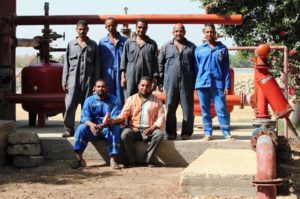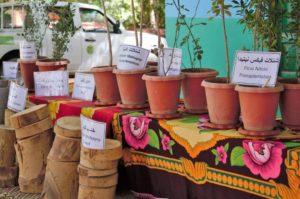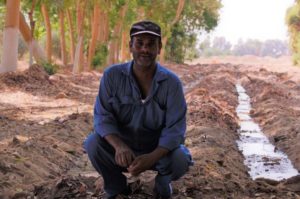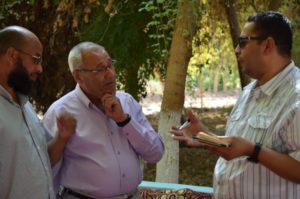ReWater MENA visits Kafr El Sheikh and Luxor governorates in Egypt
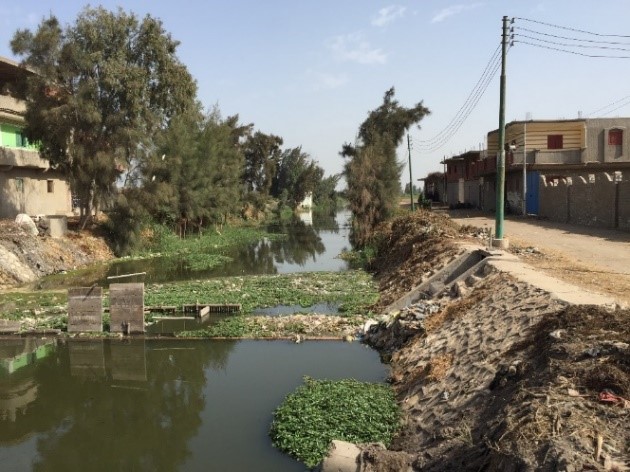
The IWMI ReWater MENA project team recently visited locations in Egypt to assess their potential for the development of promising water reuse models. Joined by representatives from the International Center for Agricultural Research in the Dry Arias (ICARDA) and Holding Company of Water and Waste Water (HCWW), the team traveled to the country’s Kafr El Sheikh and Luxor governorates. The visits offered opportunities to explain the project’s objectives, outputs and potential benefits.
Kafr El Sheikh
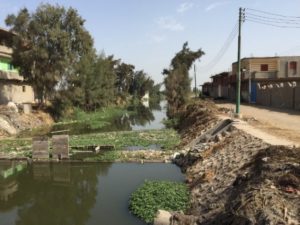
The site in Kafr El Sheikh, which the team visited on October 21, 2018, is located 125 kilometers north of Cairo, along the western branch of the Nile River, where the majority of residents live in rural areas. The aim of this field visit was to identify research sites where farmers use polluted water for irrigation. Project researchers plan to assess the feasibility of domestic pollution control measures in combination with on-farm practices for safe use of marginal quality waters.
During the visit, the team met Eng. Mohamed Abdel Hamid Moftah, head of HCWW in Kafr El Sheikh, who encouraged the research team to view different pollution control interventions on which the project could capitalize. These were a constructed floating wetland, decentralized wastewater treatment plant and pilot manure biodigestor.
The floating wetland, located in Sandala village, was constructed through a project centering on a specific experiment. The wetland subsequently received no maintenance and was therefore in poor condition. The research team will analyze the reasons for the lack of maintenance to draw lessons for similar initiatives.
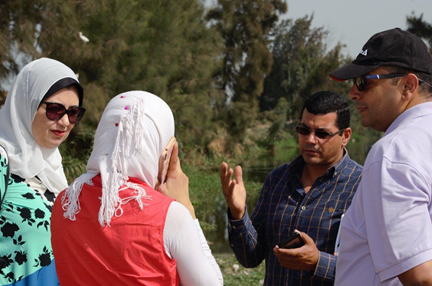
The wastewater treatment plant located in Sakha village, collects 87 million cubic meters per year from surrounding villages. Secondary treatment results in water that is odorless and of good quality at a cost of about 3 Egyptian pounds per cubic meter, but this water is discharged into a poor water quality drain, missing opportunities for safer water reuse downstream. The research team will analyze the policy changes that may be needed to allow discharge to irrigation canals rather than drains.
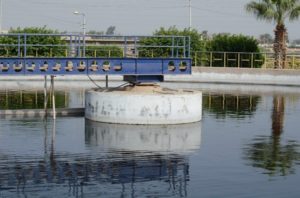
The pilot-scale manure biodigestor in El Sahayed village relies on a small-scale anaerobic digester unit, which collects manure from 7-10 cows per day and produces biogas and bioslurry (biofertilizer). Methane fuel, which can be used for cooking in rural households, serves as an alternative to traditional three-stone fires or cook stoves using liquid petroleum gas. The team will study how the concept can be also used for septage digestion and reuse.
Luxor
During its visit to Luxor on October 22-24, 2018, the project team met Gen. Mohamed Yehia Sliman, head of HCWW in this governorate.
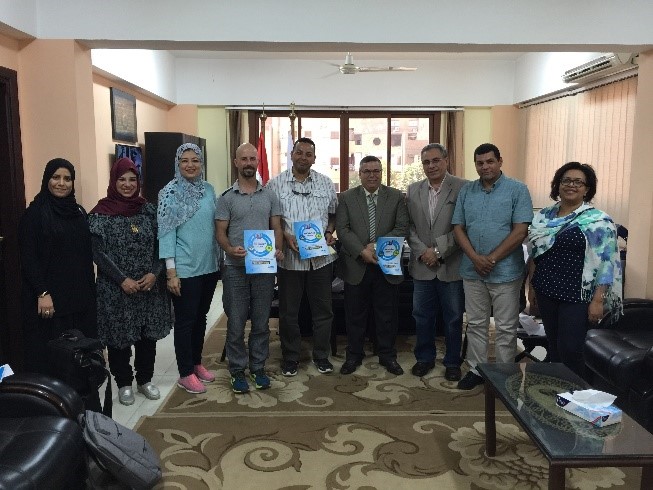
He proposed an agroforestry area to serve as a project site. The trees are watered using a furrow and drip irrigation system with 50,000 cubic meters of treated wastewater per day from an oxidation pond that serves Luxor city and few surrounding villages. Covering 1,900 Feddan (800 hectares), the forest was planted in 2005-2008 by a project of the US Agency for International Development (USAID). The trees withstand salinity levels that reach 3,000 parts per million.
Species planted in the forest include:
- Jojoba trees: One of various industrial species grown worldwide, it produces seeds the size of peanuts, containing 50% by weight pure oil, which can be used in medicines, cosmetics, lubricants and other products. Production starts from the third or fourth year, with 150-300 kilograms per feddan, increasing to 900 kilograms.
- Jatropha trees: Used to produce biofuels and motor oils, these trees are environmentally friendly, offering an alternative to non-renewable energy (oil and coal).
- Sweet sorghum: used as green fodder for cattle and sheep.
- Kaya trees: a source of wood.
- Eucalyptus trees: Production reaches 110,000 kilograms per feddan.
- Gazorina trees: Production reaches 130,000 kilograms per feddan
The project team will continue to assess potential project sites in Egypt as well as Jordan and Lebanon during the coming weeks. The project will seek sites with the greatest potential for implementation of a reuse intervention at scale, using project recommendations.
